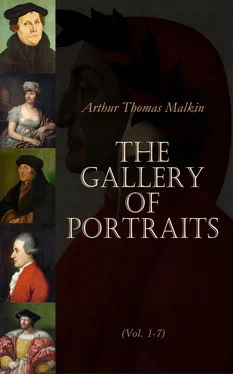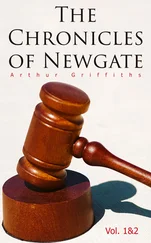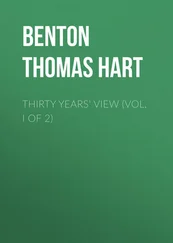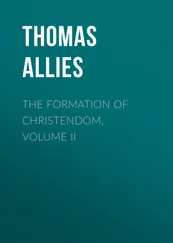The great work of Laplace is the ‘Mécanique Céleste,’ a collection of all that had been done by himself or others, concerning the theory of the universe. It is far above the reach even of the mathematical reader, unless he has given a degree of attention to the subject, which few, at least in our day, will exert. But Laplace was an elegant and clear-headed writer, as well as a profound analyst. He has left, we will not say for the common reader, but for those who possess the first elements of geometry, a compendium of the Mécanique Céleste, in the ‘Système du Monde.’ This work is free from mathematical details, and, were it his only production, would rank him high among French writers. We recommend it as the best exposition of the present state of our knowledge of the solar system.
But if it be said that Laplace was much indebted to the labours of Lagrange and others, for the methods which form the basis of the Mécanique Céleste, which is undoubtedly true, we have a splendid instance of what might have been expected from him under any circumstances, in the ‘Théorie des Probabilités.’ The field was here open, for though the leading principles of the science had been laid down, and many difficult problems solved, yet some method was still wanting by which sufficient approximation might be made to problems involving high numbers. In the theory of chances the great complexity of the operations required, soon renders the application of the clearest principles practically impossible; or, we should rather say, would have done so had it not been for the researches of Laplace. His work on this subject is, in our opinion, even superior to the Mécanique Céleste, as a proof of the genius of the author. The difficulties above described disappear under an analysis more refined and artificial than any other which has ever been used. The mathematician may or may not read the Mécanique Céleste, according to whether he would wish or not to turn his attention to physical astronomy; but the analyst must study the Théorie des Probabilités, before he can be said to know of what his art is capable. The philosophical part of his work, with its principal results, was collected by the author in the ‘Essai Philosophique sur les Probabilités,’ in the same manner as those of the Mécanique Céleste were exhibited in the Système du Monde.
The mathematical style of Laplace is entirely destitute of the simplicity of that of Euler, or the exquisite symmetry and attention to the principles of notation, which distinguishes that of Lagrange. We may almost imagine that we see the first rough form in which his thoughts were committed to paper; and that, when by attention to a particular case, he had hit upon a wider method, which embraced that and others, he was content to leave the first nearly as it stood before the generalization opened upon him. His writings abound with parts in which the immediate train of investigation is dropped, either not to be resumed at all, or at a much later period of the subject. He seems, like the discoverer of a new channel, to have explored every inlet which came in his way, and the chart of his labours consequently shows the unfinished surveys on either side of the main track. This habit is no fault, but quite the reverse, in a work intended for finished mathematicians, to be the storehouse of all that could be useful in future operations: but it makes both the Mécanique Céleste and the Théorie des Probabilités present almost unconquerable difficulties to the student. These are increased by the very wide steps left to be filled up by the reader, which are numerous enough to justify us in saying, that what is left out in these writings would constitute a mass four times as great as that which is put in, and this exclusive of numerical calculations. When we add that those two works are contained in six quarto volumes, which hold more than two thousand five hundred pages, some notion may be formed of the extent of Laplace’s labours.
It will be perceived that this slight sketch is intended only for those who are not mathematicians. In conclusion, we may take the opportunity of expressing a hope, that at no distant period analytical knowledge will have become so general, and the public mind be so far informed upon the great theory first propounded by Newton, and reduced to demonstration by Lagrange and Laplace, that the evidence furnished by the two last shall possess equal weight with the authority of the first.
4. A scanty account in the Biographie des Contemporains, and the Eloge read to the Institute by M. Fourier, form our only materials for the personal life of Laplace.
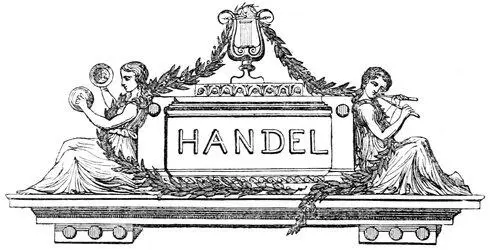
Table of Contents
George Frederic Handel, whom we will venture to call the greatest of musicians, considering the state in which he found his art, and the means at his command, was born at Halle, in the Duchy of Magdeburg, February 24, 1684. He was intended, almost from his cradle, for the profession of the civil law; but, at the early age of seven, he manifested so uncontrollable an inclination, and so decided a talent for the study of music, that his father, an eminent physician, wisely consented to change his destination, and suffered him to continue under the direction of a master those studies, which he had been secretly pursuing with no other guide than his own genius.
Friedrich Zachau, organist of the cathedral church of Halle, was the first and indeed the chief instructor of Handel. He discharged the duties of his office so well, that his pupil, when not nine years old, had become competent to officiate for his teacher, and had composed, it is said, many motets for the service of the church. A set of sonatas, written by him when only ten years old, was in the possession of George III., and probably forms part of the musical library of our present sovereign.
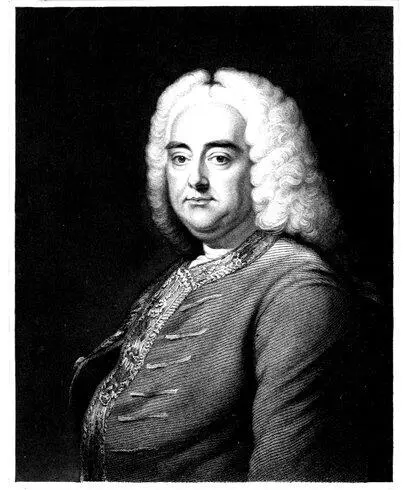
Engraved by J. Thomson. HANDEL. From a Picture in the Collection of His Majesty at Windsor. Under the Superintendance of the Society for the Diffusion of Useful Knowledge. London, Published by Charles Knight, Pall Mall East.
In 1703 Handel went to Hamburg, where the opera was then flourishing under the direction of Reinhard Keiser, a master of deserved celebrity, but whose gaiety and expensive habits often compelled him to absent himself from the theatre. On one of these occasions Handel was appointed to fill his place as conductor. This preference of a junior roused the jealousy of a fellow-performer, named Mattheson, to such a degree that a rencontre took place between the rivals in the street: and Handel was saved from a sword-thrust, which probably would have taken fatal effect, only by the interposition of a music-score, which he carried buttoned up under his coat. Till this time he had occupied but a very subordinate situation in the orchestra, that of second ripieno violin; for from the period of his father’s death he had depended wholly on his own exertions, nobly determining not to diminish his mother’s rather straitened income by any demands on her for pecuniary assistance. But now an opportunity for making known his powers was arrived; for the continued absence of the conductor Keiser from his post induced the manager to employ Handel in setting to music a drama called Almeria. So great was the success of this piece, that it was performed thirty nights without interruption. The year following he composed Florinda; and soon after, Nerone, both of which were received in as favourable a manner as his first dramatic effort; but not one of these is to be found in the collection formed by George III., and they seem quite unknown to all writers on music, except by their titles.
Читать дальше
